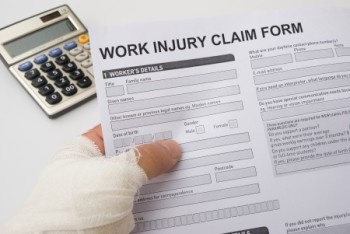
If you’re in the market for a Workers’ Compensation insurance policy you may have come across something called the Experience Modification Factor. The experience modification, or e-mod, is a value that is used to adjust workers’ compensation premiums. It’s based on past insurance claims and future risk likelihood. A lower e-mod will translate to lower insurance premiums, while a higher value equates to higher premiums. The construction industry can be particularly hard-hit by high experience modification factors given the nature of the work.
The e-mod is an incentive for loss prevention, appearing as either a debit (surcharge) or a credit (discount) towards the premium, before any other discounts are applied. It has been likened to a credit history because it follows the company over time, whether they remain with the same insurance carrier or not and even if the business is sold.
Why It Is Used
Workers’ Compensation is a class rated insurance program. Rates vary by industry but they remain consistent across the state. All electricians are subject to the same rates just as all plumbers are, for example, but electrician and plumber rates are not necessarily the same across industry lines. Plumbers get the plumber rate. Electricians get the electrician rate.
These rates are an average within an industry; they do not reflect the actual claims history of a particular business and do not differentiate between businesses. Insurers need some way to differentiate between businesses within an industry so they can determine insurance premiums – otherwise high-risk, high-claim companies would have the same rates as lower-risk, lower claim companies. The experience modification factor is used to put a value on those risk patterns so it can be taken into account when calculating premiums.
Who Is Affected?
Not all businesses are affected by the experience modification factor. Only employers that have premiums of between $5,000 and $10,000 or more annually for at least 3 years are eligible for an experience modification rating, but the actual threshold amount varies by state. Those with less than $5,000 in premiums do not qualify for the rating because they are considered a low-risk for claim exposure. These companies would pay the basic rates for coverage, minus any other discounts they might qualify for. Still, 90% of workers’ compensation premiums come from experience rated policies, making it extremely wide reaching.
How Is It Determined?
Experience Modification Factors are determined by a number of variables. First, the National Council of Compensation Insurance (NCCI), calculates the national average for an industry. The NCCI only compares similar industries to one another, so construction companies will only be compared with other construction companies, not a retail business, for example. This makes the evaluation more equitable between individual businesses because all of the businesses in the industry have similar areas and types of risk. The insurance carrier does not have an impact on the experience modification factor.
The industry average is based on many factors including payroll, losses/claims, and industry risks, among others. These factors are examined going back for a period of 3 years. From there, the NCCI sets an industry average against which all companies within that industry will be compared.
All averages are 1.0 regardless of the industry. A value of 1.0 means the actual losses equaled the expected losses. If the mod value is greater than 1.0, it means the company experienced more losses than were expected. Likewise, a value of less than 1.0 means losses were less than expected.
For example, a company with an e-mod of 1.3 presents a higher risk than one with an e-mod of .9. The company with an e-mod of 1.3 will pay 30% more in premiums than the one with a .9 e-mod, which will pay 10% less in premiums.
A company’s actual mod value is determined based on their claim profile as compared to the industry average for a company of the same size payroll.
Why Does The Experience Modification Factor Matter?
Besides having a direct impact on your insurance premiums, e-mods have been known to make or break business deals. Government agencies, in particular, tend to ask about the experience modification factor of the vendors from whom they’ve received bids. A high e-mod has been known to cause companies to lose bids.
Reducing Your Experience Modification Factor
Reducing your Experience Modification Factor is possible and doing so will lower your workers’ comp premiums and present you as less of a risk than a company with a higher e-mod. But it takes time. It will take 3-4 years of a reduced claims history for your factor to decrease.
The best things you can do is create a safe workplace and enforce safety standards. Accidents happen, insurers understand that, but frequent claims weigh more heavily against you than one or two larger claims. You want to do whatever you can to eliminate the frequency and severity of injuries.
Always double check the calculations used to determine the experience modification factor. Mistakes do occur and you may find one that works out in your favor. Look for correct dates, accurate and complete payroll data, and incorrect claim amounts since these are common errors. You can request a recalculation if an error is discovered.
If you don’t know your experience modification factor, ask your insurance carrier to provide it to you. It is definitely worthwhile to review this information every year to make sure the data that was reported is correct and to get a better understanding of how your workers’ comp claims compare to the state average.

 Michael Schlueter
Michael Schlueter